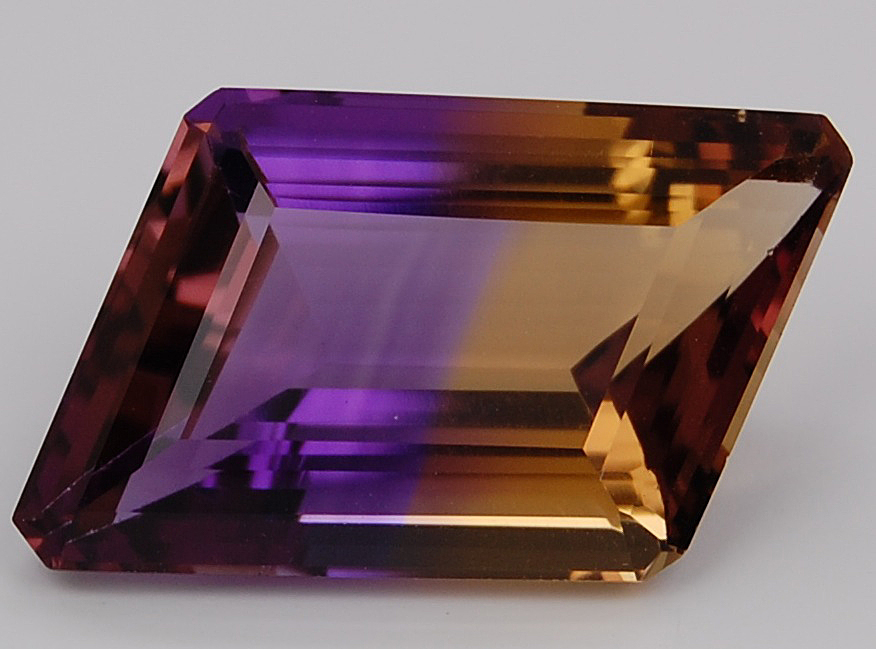
Introduction: Ametrine is a variety of quartz. Pictured above is a 34.99 ct rhomboid from the Anahi Mine in Bolivia.
Colors: bicolored purple and yellow zones corresponding to rhombohedral growth regions.
Clarity: Ametrine is of Type I clarity. By definition, gems of this type grow extremely clean in nature and usually have no eye visible inclusions. Two phase and three phase inclusions are common along with fluid inclusions and negative crystals.
Stone Sizes: Although large ametrines have been fashioned, most stones are less than 25 carats. Some stones are cut to blend the purple and yellow colors and others are cut to accentuate the color split.
Localities: Virtually all ametrine is from Bolivia, most from the well known Anahi Mine.
Treatments:
-Heating (H) of both natural and synthetic amethyst can produce similarly colored material. These stones are indistinguishable from natural stones.
Gemology:
-Refractive Index: 1.544-1.553
-Birefringence: 0.009
-Optic Character: Doubly refractive, uniaxial positive
-Dispersion: 0.013
-Specific Gravity: 2.66 (+0.03,-0.02)
-Hardness: 7
-Toughness: good
-Chemical Composition: SiO2
-Cause of Color: Color centers involving iron impurities and natural irradiation, Iron
-Absorption Spectra: Not diagnostic.
-Fluorescence: Usually inert
-Cleavage: None
-Phenomena: None
Name: Ametrine is named after it’s two color components, amethyst and citrine.
Dates: None.
Care: The ultrasonic is usually safe but the steam cleaner is risky. Warm, soapy water is always safe.
To see available ametrines, click here.
